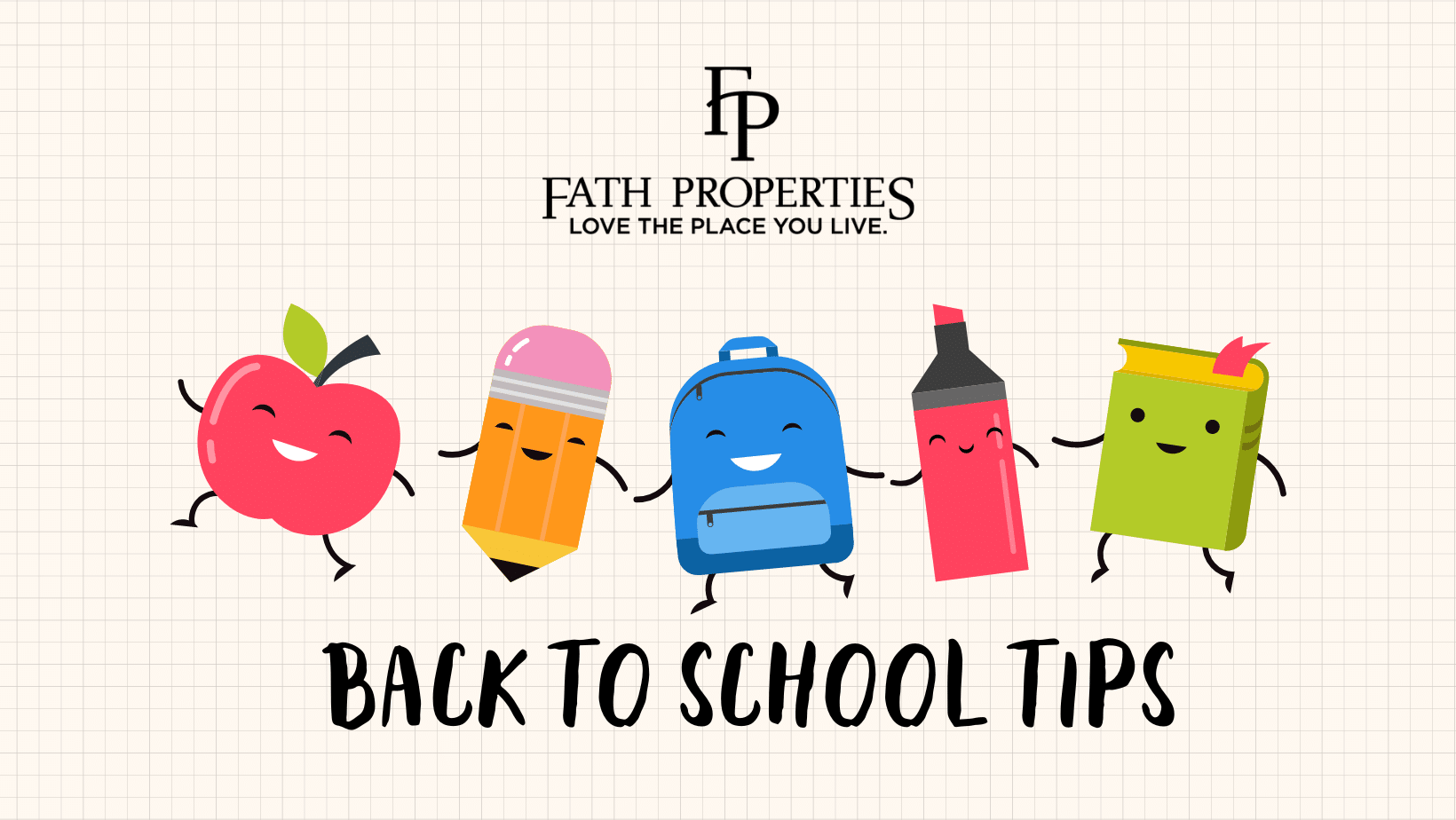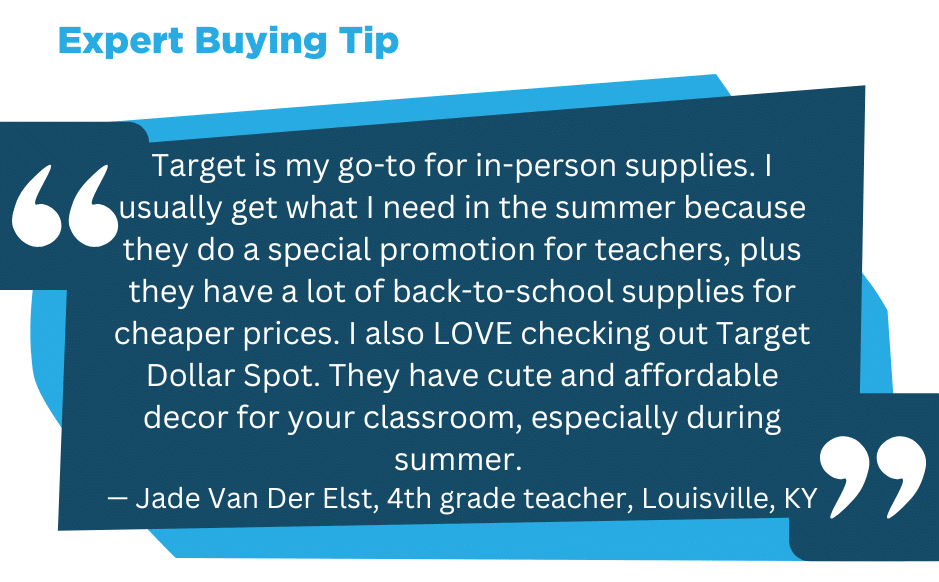
Just when summer is in full swing, you go to Target and their seasonal section is full of Back To School supplies. Yikes. Is it just me, or does it seem wrong to send kids to school while it’s still summer? Growing up, school started after Labor Day, and seeing the hostas in bloom was our sure sign school was just around the corner (although my hostas started blooming at the end of July; perhaps my mom grew a late-blooming varietal?) Now August is the back-to-school month. Regardless of when kids return to continue their education and whether or not you are a parent, this time of year affects us all.
If you are a parent, you might be jumping for joy to get your children back to a routine. Or you could be worried about transportation hassles, the cost of class supplies, school versus work schedules, or bullying. Your kids may be excited to see their friends but could have concerns about homework, projects, navigating bus routes, virtual school, or making friends. If you are not a parent, you might experience traffic delays as those big yellow buses and school zones slow things down a bit. Needless to say, back-to-school season is a challenge for everyone involved. Here are some suggestions to help you navigate the season with grace, calm, and organization.
ROUTINE
Switching from a summer to a school schedule can be stressful for everyone in the household. Avoid first-day-of-school mayhem by practicing your routine in advance. Return to a regular sleep schedule a few weeks before school starts. Establish regular bedtimes and start gentle wind-down activities such as bath time and reading. Getting enough sleep is an important part of being ready to learn and concentrate. Did you know that insufficient sleep could lead to lower academic achievement and higher rates of absenteeism and tardiness? The optimal amount of sleep for most younger children is 10-12 hours per night and for adolescents (13-18 years of age) is in the range of 8-10 hours per night.
Now is the perfect opportunity to establish screen time limits. Your whole family can “unplug” in the evenings before bedtime, charge devices overnight in the same spot, and use an alarm clock instead of a cell phone to wake up in the mornings. Rising a bit earlier will allow time for a good breakfast and prevent rushing around headaches.
Establishing a consistent routine is important for kids. Write out the steps in the routine and rehearse them with your child. In the evening, this could include doing homework, playtime, brushing their teeth, having a bath, and reading before bed. Routines help children feel comfortable, and establishing a solid routine will make the first day go much smoother.
PRE-SCHOOL JITTERS
Many children get nervous about new situations, including changing to a new school, classroom, or teacher. This may happen at any age! If your child seems nervous, it can be helpful to rehearse heading into the new situation. Take them to visit the new school or classroom before the first day of school. Hopefully, this will help ease their fears. Plus, it will give you a good idea of how they are spending their day.
Remind your child that there are probably a lot of students who are uneasy about the first day. Teachers know that students are nervous and will make an extra effort to make sure everyone feels as comfortable as possible. If your child seems nervous, ask them what they are worried about and help them problem-solve ways to master the new situation.
One of the biggest back-to-school fears is “Will I like my new teacher?” Breaking the ice early on is one of the best ways to calm everyone’s fears. Go to your school’s open house or back-to-school night. Some teachers welcome phone calls or e-mails — another great opportunity to get to know each other before the year begins.
You can also try to locate the teacher’s picture on a school website or in a yearbook, so your child can put a name with a face. If your child’s teacher sends a welcome letter, be sure to read the letter together.
Point out the positive aspects of starting school to help your kids look forward to the first day of class. Talk about how they will see old friends and meet new ones, for example.
If you feel it is needed, drive your child (or walk with them) to school and pick them up on the first day. Get there early on the first day to cut down on unnecessary stress.
SCHOOL SUPPLIES
Obtain the class supply list and take a special shopping trip with your child. Having the right tools will help him feel prepared. While keeping basic needs in mind, allow for a couple of splurges like a cool notebook or a favorite-colored pen. These simple pleasures make going to their place of higher learning a lot more fun. I always loved shopping for school supplies as a kid, didn’t you? In fact, I still enjoy a trip to Office Depot, Staples, or Target to indulge myself with new office supplies and almost always find something I didn’t realize I needed!
Supply lists also provide great insight into the schoolwork ahead. Get your child excited about upcoming projects by explaining how new supplies might be used. Let him practice using supplies that he’s not used before — such as colored pencils or a protractor — so he will be comfortable using them in class.
Review the school supply list and shop for as many bargains as possible. Retailers are all jockeying for you to spend money with them. Keep in mind you can often substitute store-brand items for name-brand and get the same quality for less money. Click here for The Spruce’s Top 8 Best Places to Buy School Supplies.
BACKPACKS
Most kids carry books in a backpack and not all are created equal. But they are SO MUCH BETTER than the awful, heavy bookbags of years gone by. Click here for Good Housekeeping’s 12 top-tested backpacks for the 2023 school year. Look for a backpack with wide, padded shoulder straps and a padded back. Organize your child’s backpack to use all of its compartments. Pack heavier items closest to the center of the back. The backpack should never weigh more than 10% to 20% of your child’s body weight. We don’t want them to tip over! Go through the pack with your child weekly and remove unneeded items to keep it light.
Remind your child to always use both shoulder straps. Slinging a backpack over one shoulder can strain muscles. Adjust the pack so that the bottom sits at your child’s waist.
If your school allows, consider a rolling backpack. This type of backpack may be a good choice for students who must tote a heavy load. But keep in mind that rolling backpacks still must be transported up and down stairs, they may be difficult to roll in snow, and they may not fit in some lockers.
TRANSPORTATION
Determine how your child will travel to and from their education venue. Review the basic rules with your student and practice any new routes or modes of transportation:
School bus
- Remind your child to wait for the bus to stop before approaching it from the curb.
- Make sure your child walks where she can see the bus driver.
- Practice how to cross the street before the first day of school.
- Encourage your child to use lap/shoulder seat belts if provided.
Bike
- Practice the bike route to school before the first day of school.
- Require the use of a bicycle helmet, no matter how short or long the ride is. For the 10 best kids’ bike helmets, click here.
- Ride on the right, in the same direction as auto traffic, and ride in bike lanes if they are present.
- Practice, then use appropriate hand signals.
- Obey traffic lights and stop signs.
- Wear bright-colored clothing to increase visibility. White or light-colored clothing and reflective gear is especially important after dark.
Walk
- Most kids are ready to start walking to school at 9 to 11 years of age.
- Make sure your child’s walk to school is a safe route with well-trained adult crossing guards at every intersection.
- Find other kids in the neighborhood with whom your child can walk to school. In neighborhoods with higher levels of traffic, consider organizing a “walking school bus,” in which an adult accompanies a group of neighborhood children walking to school.
- If your children are young or are walking to a new school, walk with them or have another adult walk with them the first week or until you are sure they know the route and can do it safely. If your child will need to cross a street on the way to school, practice safe street crossing with them before the start of school.
- Bright-colored clothing or a visibility device, like a vest or armband with reflectors, will make your child more visible to drivers.
FOOD
- Provide a good breakfast before starting off. Studies show that kids who eat a nutritious breakfast do better in school, and have better concentration and more energy. Click here for 35 quick and easy breakfast ideas from Eating on a Dime.
- Check out cafeteria menus on the school’s website. With your child, plan on packing or buying lunch.
- Many children qualify for free or reduced-price food at school, including breakfast. Complete forms for these services at the school office.
- Does your child’s facility have a plan that allows you to pay for meals through an online account? Kids get a card to “swipe” at the register for a cashless experience.
- Click here for 50 ideas on packed school lunches from Super Healthy Kids, and for the perfect transportation of a yummy lunch, click here for the New York Times recommendations for the best kids’ lunch boxes.
CELEBRATE
How about a celebration for the first day of school so your kids will see back-to-school as something fun instead of something dreaded? Maybe a back-to-school party the day before school starts? How about pictures in first-day-of-school outfits and pictures in front of the school?
It’s going to be a great year!
RESOURCES: HealthyChildren.org, NovakDjokovicFoundation.org, PBS.org, ThePersonal.com

